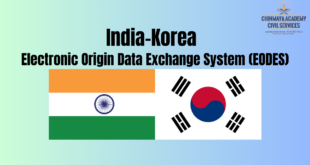- Recently, the Union Ministry of New and Renewable Energy (MNRE) released a draft policy framework on 14th February 2022 for DRE livelihood applications.
- The aim is to achieve the objective of a decentralised and distributed renewable energy supply in the country, particularly for rural populations with little or no access to power.
- MNRE proposed forming a committee to monitor the progress of DRE projects, which will meet at least once every six months.
- Within the committee, each member ministry shall nominate the main point of contact for inter-ministerial collaboration.
- Depending on the scheme being implemented on DRE livelihood application, the committee may co-opt additional ministries/departments as members.
- MNRE will make available a digital catalogue of DRE-powered solutions to be used by various stakeholders to raise awareness.
Objectives Outlined in the New Framework
- Enabling a market-oriented ecosystem.
- Increasing the adoption of DRE-based livelihood solutions by enabling easy finance for the end-user.
- Encouraging development and management of high-quality products.
- Developing effective DRE livelihood applications through innovation as well as research and development.
- Establishing energy-efficiency standards for high-potential livelihood products
- Using applications powered by mini/micro-grids operating in hybrid mode along with the main grid.
Significance:
- DRE and its downstream applications offer an opportunity to not only meet India’s climate and energy access targets, but also provide attractive returns to financial investors.
- It also provides pathways for India to reduce import-dependence on crude oil as well as create economic growth and jobs in the long run.
- In addition, addressing existing policy and financing gaps would not only allow for better targeting and risk-hedging of government spending programs, but would also allow capital to be recycled efficiently, thereby enhancing both the duration and magnitude of the impact.
Way Forward
Financial institutions may consider developing financing options that do not require collateral. Other state nodal agencies such as the state rural livelihood missions might use their existing institutional architecture to give financial assistance to the members of women self-help groups.
SOURCE: THE HINDU,THE ECONOMIC TIMES,MINT
 Chinmaya IAS Academy – Current Affairs Chinmaya IAS Academy – Current Affairs
Chinmaya IAS Academy – Current Affairs Chinmaya IAS Academy – Current Affairs

